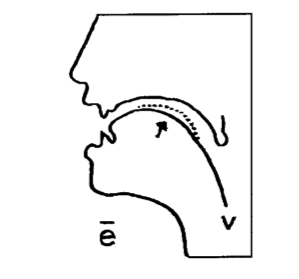
Today we continue our look at the different vowel sounds in English by focusing on the letter ‘e.’ Before honing in on the short and long vowel sounds of the letter ‘e’ I want to introduce to you the concept of the silent ‘e’ in English.
There are many words in English that end in a silent letter ‘e,’ this means the ‘e’ at the end of the word is not pronounced at all. It is like the ‘e’ is not there. So, why is it there then? A silent letter ‘e’ at the end of a word usually is a signal for how to pronounce the preceding vowel in the word, as in the difference between “hid” and “hide.” A silent ‘e’ at the end of a word usually indicates the preceding vowel should be pronounce with the long vowel sound. This is how the silent ‘e’ is helpful. It often tells the reader how to pronounce the vowel that comes before final silent ‘e.’
Now to look at how to pronounce the letter ‘e’ when it is not being silent.
e (short vowel sound)
This sound is made with the jaw open, the lips unrounded, and the tongue quite low and relaxed.
 Example words:
Example words:
excel
happiness
lemon
pet
red
ten
wedding
e (long vowel sound)
This sound is made with the jaw slightly open, the lips unrounded, and the tongue high and moving higher as you make the vowel sound.
 Example words:
Example words:
be
clean
each
eve
me
keep
street
tree
we
Now here is another quick grouping exercise. Look at the six words below and group together into two groups based on whether they have either a short or long ‘e’ sound. Hint: There are three words with short ‘e’ sounds and three with long ‘e’ sounds.
Once you have finished deciding which group each word belongs to you can check your answers by clicking on this link where you can also hear these words pronounced: http://www.abcfastphonics.com/vowel-letters/vowel-e.html.
eat
echo
nest
eel
edge
feet







